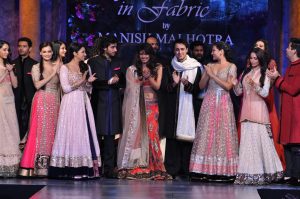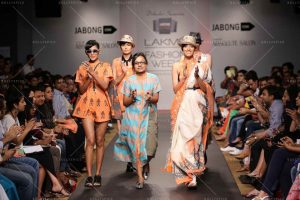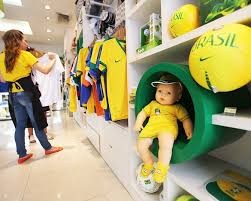 It is so important for people of all ages and from all walks of life to give more attention to their appearance. It is one of the easiest ways to improve a person’s social prospects; everyone wants to be seen good and polished. Looks fall under the broader category of non-verbal communication. People usually have a hard time looking past a sloppy exterior and nobody has time and inclination to get to know the real somebody. Most people are pretty superficial and least bothered when they size up others. If you manage to put your act together, the world around you can’t help but assume you really do. So to keep up with today’s superficial standards everyone wants to live up to their appearance’s full potential. By looking good, you can camouflage the negative traits in you; everyone is more willing to give you an opportunity.
It is so important for people of all ages and from all walks of life to give more attention to their appearance. It is one of the easiest ways to improve a person’s social prospects; everyone wants to be seen good and polished. Looks fall under the broader category of non-verbal communication. People usually have a hard time looking past a sloppy exterior and nobody has time and inclination to get to know the real somebody. Most people are pretty superficial and least bothered when they size up others. If you manage to put your act together, the world around you can’t help but assume you really do. So to keep up with today’s superficial standards everyone wants to live up to their appearance’s full potential. By looking good, you can camouflage the negative traits in you; everyone is more willing to give you an opportunity.
And what more, the e-commerce sites like Flipkart, Myntra, Jabong are lined up to satisfy their customers with styling tips. In e-commerce, the fashion category is seeing a lot of grip from consumers and sellers both. Sales in this category have doubled to almost $571 million compared with top categories like electronics and books, with an estimated growth rate of 20 percent per year. The fashion segment is projected to reach $2.9 billion by 2016; can you imagine? People are really possessed with their looks. From apparels, perfumes, cosmetics, shoes to accessories you name the trend, style and people from even rural areas want to search and scan the latest designs and order them.
Indian e-commerce companies are investing heavily in this category because the margins are 20 percent higher as compared to other categories of products. Do you believe? It can go higher almost 50-60 percent in the case of private labels. Further, in the case of private labels, the control on the supply chain and inventory is higher. These higher margins are a blessing for e-commerce companies because they can offset the hits taken due to free shipping, same day delivery and wafer-thin margins on standard goods such as books and electronics which are single digit margin. This definitely has played a big role in Flipkart’s acquisition of Myntra. The growth is further blessed by the fact that India has been used as a sourcing hub by the global fashion brands because of the textile clusters present in Coimbatore, Madurai, Bangalore, Varanasi, Bareilly, Lucknow, Surat, Kutcch and Bhagalpur.
“India is going to be the third biggest e-commerce market in the world; after the US and China, it’s a capital-intensive business. If you want to build an e-commerce business, capital is required” says Flipkart CEO – Sachin Bansal. Online retail is worth $3.1 billion, or 10% of the organized retail market, and is estimated to grow to $22 billion, or over 15% of the organized retail market, in five years, according to a November 2013 report by brokerage firm CLSA. The revival of investor interest comes after two years, when most of the venture capital firms steered-clear of local e-commerce companies in past.
Given the high impact on the bottom line by fashion category, top Indian online retailers are now vying to increase and retain their customers. In addition to the traditional loyalty programs outstanding customer service, special discounts, well planned segmenting, targeting & positioning, newsletters, free delivery, scheduled delivery and subscription based services, these portals are now pulling out all very innovative marketing strategies to engage with customers at a non-transactional level to get them to spend more and spend often.
Flipkart-Myntra lately launched a fashion incubator for young budding entrepreneurs in the field of fashion. The first batch of 20 entrepreneurs have already started with 3-4 online brands amid them getting incubated and retailed through their own online e-commerce store. Currently, Flipkart-Myntra together account for nearly half the fashion market share. Myntra is expecting nearly a tenth of the revenue with its forthcoming launch of private labels along with the associated higher margins. Huge billboards of the Myntra’s “Live for Likes” campaignin most major cities have been created to target the digital generation; the young generation which spends a significant amount of time online every day. It supports and encourages users to be their stylish best and put up their ‘selfies’. This online fashion trend game had Lisa Haydon as the brand ambassador, and also had a targeted micro site for encouraging users. Myntra’s ‘Look Good’ helpline is helping customers to talk to the stylist for personalized advice either on phone or email. This e-commerce firm wants to democratize fashion.
On the other hand, Jabong started hosting fashion events for displaying their collection. For example, there was a Jabong stage at the Lakme Fashion Week this year. They have launched India’s first online Fashion Week in July and have also linked with two Bollywood movies ‘Main Tera Hero’ and ‘Humpty Sharma ki Dulhaniya’ for showcasing their apparel collection. So if a customer can’t make up his/her mind which dress to buy, they just need to call the phone number or log on to the website and a stylist will call back shortly and tell what would suit the customer. This helps the customer to make decision.
Marketing has no end in imagination – Zovi, a well-known private label brand has developed its own courier services and supply chain in cities where it has good footing. Besides 30-day return and free shipping, Zovi has introduced ‘try before you buy’, allowing customers to try clothes before making the purchase.
Limeroad‘s “Create and Earn” initiative is an innovative way in which users (women only) can design and display her style and fashion in a scrapbook and earn a certain percentage of the sale amount of all items sold through their scrapbook looks. Limeroad also celebrates real womenhood by pinning their images on their official ‘Pinterest’ Page giving women a chance to let their imaginations wild in looking good. It’s really appreciable idea by this e-commerce company.
During the Football World Cup, Jabong took the advantage of football fever selling football merchandise online on its Football Shop. The availability of the apparel is in sync with the performances of the star players of the world cup tournament with Ronaldo, Messi and Neymar appearing almost universally.
So friends, fashion tips are no longer the privilege of actors, rich & famed people only – it’s now available at the click of a button for somebody sitting in Kanpur, Ranchi or Simla – the entire country. The e-commerce players have created magic, looking stylish is everybody’s right. Personalized consultancies and live-chats are certainly increasing the fashion quotient of the country. Consumers trying to get free fashion tips have to just dial the e-commerce toll-free numbers and log on to their websites. That’s it.
As the economist Schumpeter saw it, creative destruction is a positive force, which drives away weaker companies to disappear and be replaced by more innovative and competitive ones. Creative destruction is inevitable. We are living in a world of constant cultural change, constant trend change, and constant fashion change. All that we can do is accept it, if we cannot control it. Aren’t we all abandoning our old way of living and thinking in order to fit and live in today’s self-absorbed world thinking more effectively and profitably? The digital revolution is gripping the world by changing its habits, thinking, and living way itself. E-commerce has transformed the business model and changed the shopper’s approach towards retail. Despite its vital effect on shopping behavior, e-commerce is far from revolutionary; it’s simply an evolution. Many retailers and manufacturers have recognized the tremendous opportunities created by the new technology.















































